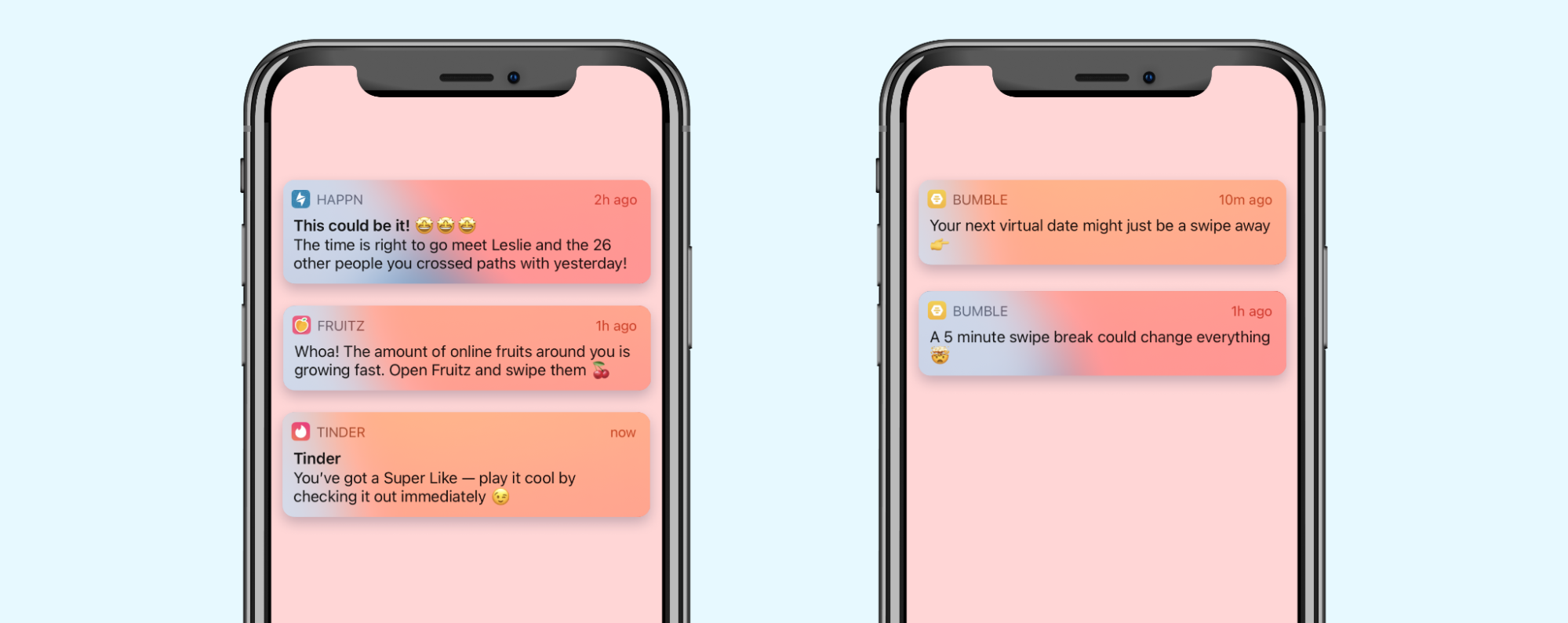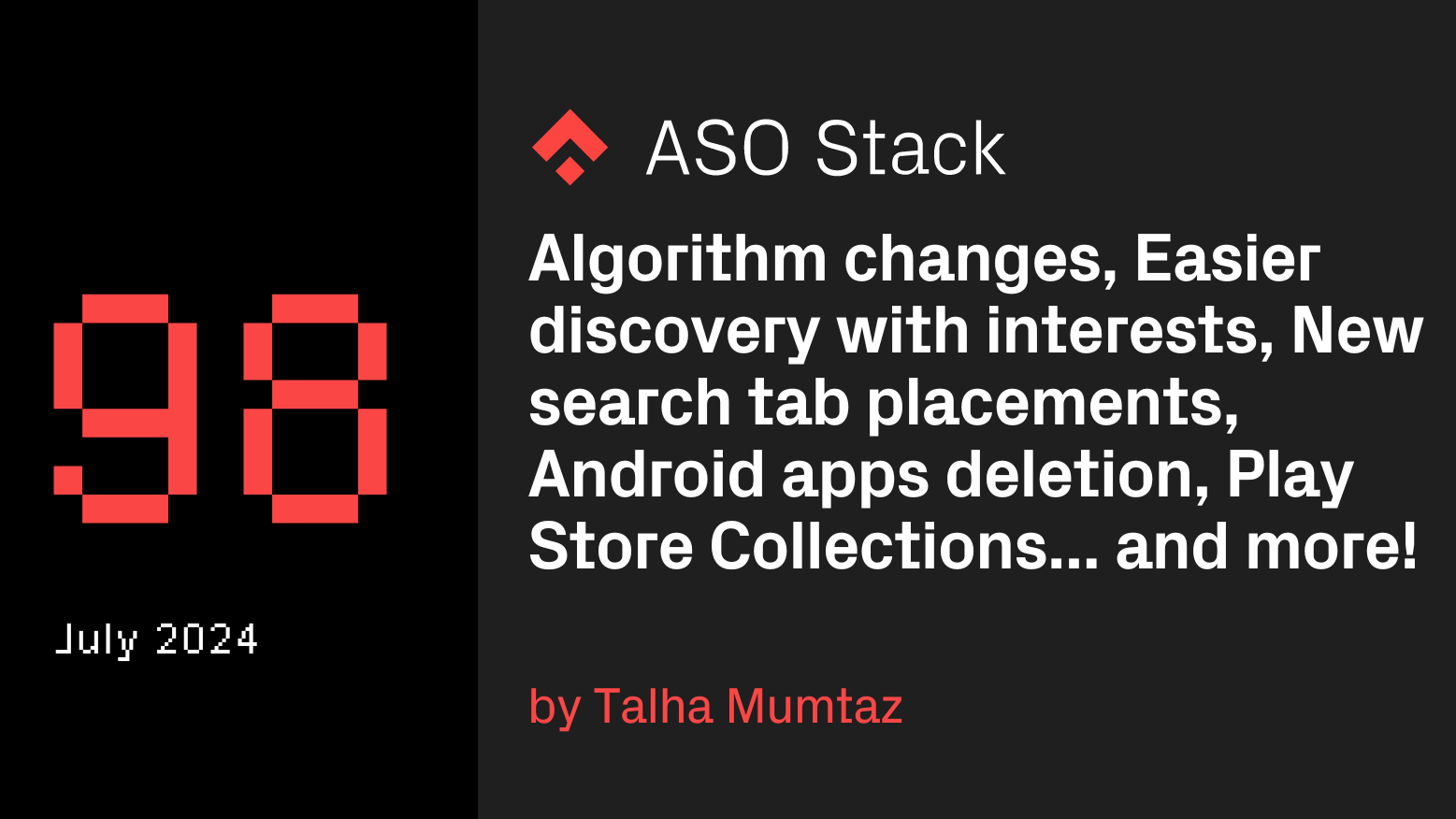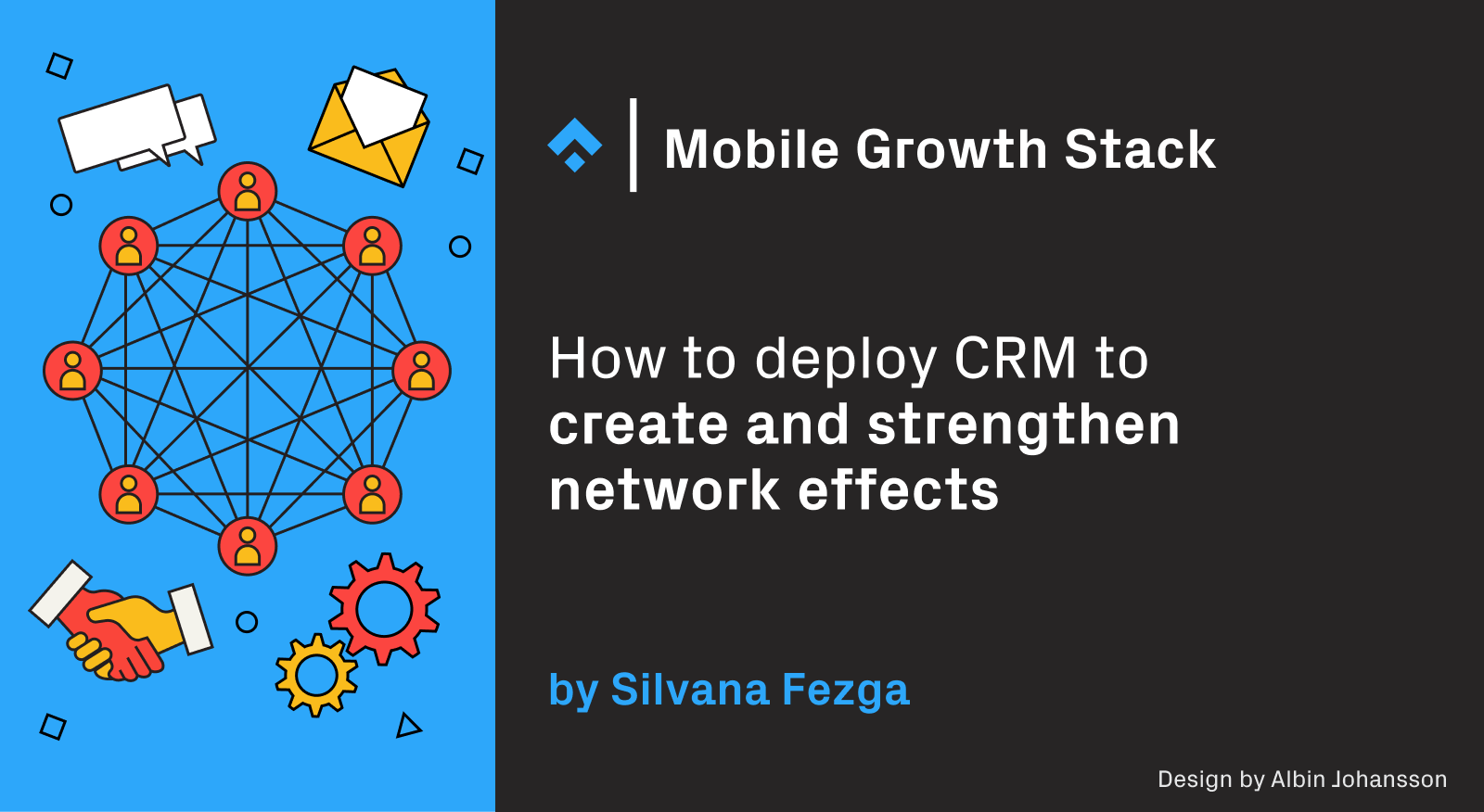
The terms Viral and Network Effects are common parlance in mobile growth marketing and are often used interchangeably. While there are similarities between the two effects, there are also stark differences that mobile growth marketers need to understand, especially as both phenomena are highly desirable to apps of all categories and could be a part of your growth strategy.
In this article, we’ll delve into what is meant exactly by Viral and Network Effects, focussing in particular on how CRM can create and contribute to network effects through the five stages of Andrew Chen’s Cold Start Theory. We’ll also illustrate this with some common examples of CRM to be found across several categories of apps.
What are Viral and Network Effects?
A Viral Effect in marketing is the process of information about a product or app being shared rapidly and widely across social networks, from user to user.
This is often the holy grail for acquisition marketers, as existing users bring the app new users, without incurring costs. The recent explosion of AI apps is a case in point of the Viral Effect. This explosion in growth has been thanks to users sharing via their social channels the capabilities of particular AI tools. A viral effect doesn’t only happen for digital products either. The book Atomic Habits by James Clear achieved virality in 2022 by virtue of TikTok recommendations.
The Network Effect is where a product or service gains additional value for its users with every additional user. For example, a messaging platform becomes more valuable if the number of users that can communicate with each other is greater. This is also a more attractive value proposition when acquiring customers, and indeed a substantial value added for users to then continue using the app.
Let’s now break this down further with the help of another example. The network is defined by the users of the product or service and what they have to offer. For example, in a marketplace, the network consists of the sellers who are offering products as well as the buyers that buy them. The marketplace platform is the mediator that needs to make the right product suggestions to the right users, based on their habits. The Network Effect for our hypothetical marketplace is the process of the value of the marketplace increasing as more people start to use it, with more products on offer. If there are not enough products (provided by our selling users and facilitated by our mediator), the buyers will stop coming back to it, and eventually, the marketplace will die.
Instead, to maintain the effect, the supply of products on the platform (typically supplied by an increasing number of sellers) needs to exceed the number of buyers so demand can be met. The number of buyers also can’t be too small, otherwise sellers will struggle to sell their wares and lose interest and motivation in selling on the platform.
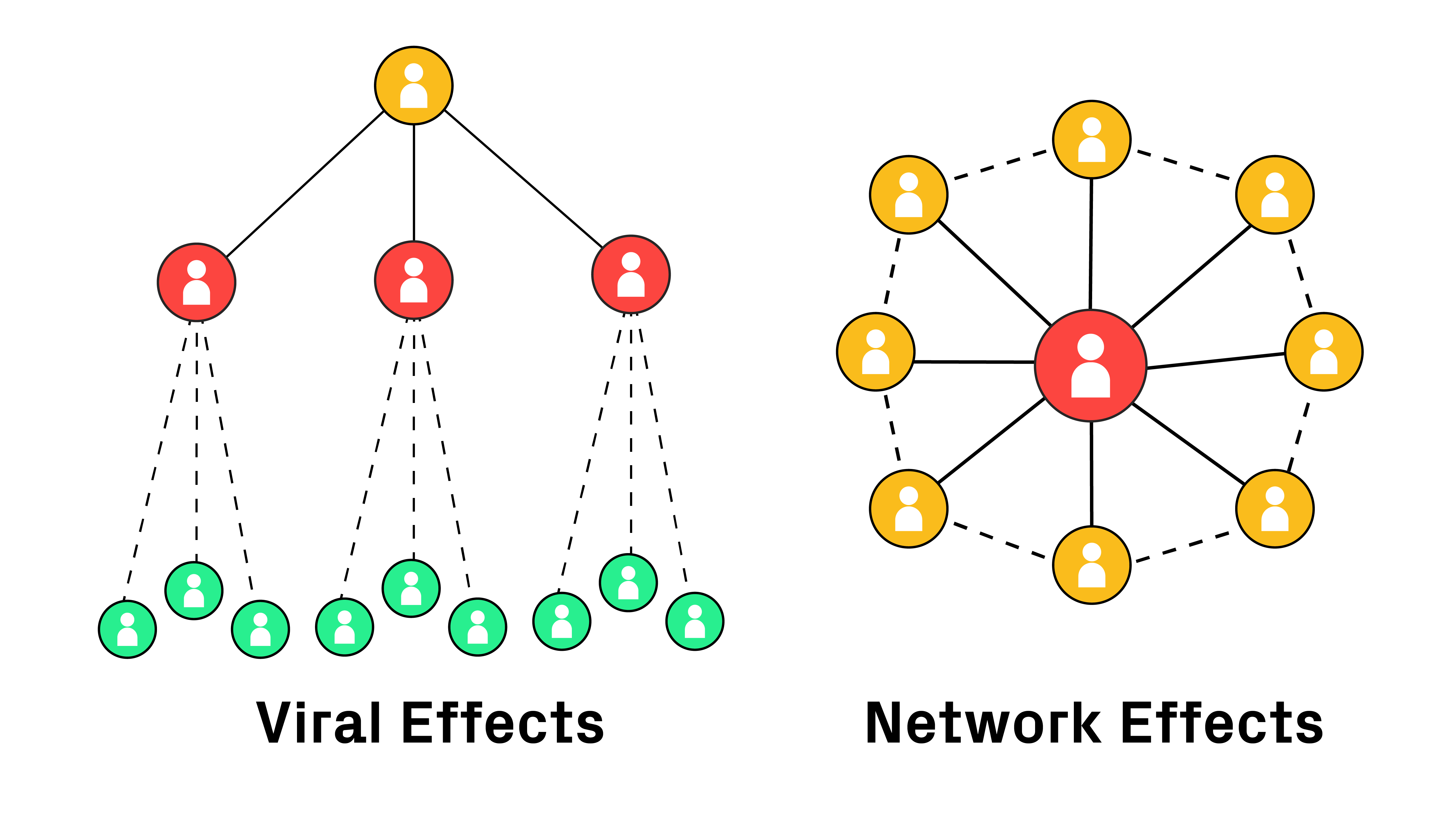
Understanding the importance of Network Effects is the first step to success for every company with network-driven products or services. In order to create a networked product, you first need to make sure your product connects users either to each other, or to a physical product to be bought or rented. If so, does it attract enough users in order to create and sustain a large and powerful network?
It all sounds so simple, but as Andrew Chen argues in The Cold Start Problem, “It’s harder now than ever to launch a product — the battle for attention is so fierce and the biggest winners crowd out the rest. Looking at the app store, for example, nowadays there are several million apps all competing for user attention.”
Multiplayer gaming apps, for example, find it particularly hard to get off the ground as they require a really strong network of players to be successful and stand out from other games in the app stores. So what can we do?
Scaling an app through Network Effects
Andrew Chen in his excellent book “The Cold Start Problem” describes a five-stage framework for creating, scaling, and defending the network effect.
The five stages of this framework are:
- The Cold Start Problem is the initial problem of getting the right users and the right content on the platform at the same time, and building the first “atomic network.” This is the initial – and smallest – network that can grow on its own.
- The Tipping Point: a single, small network is not enough! Once the first atomic network is established, we need to continue building many more of those. The good news is that as the mother network grows, each new smaller network (be it city by city, market by market, etc) starts growing/tipping faster and faster, so the overall market is more easily captured, and the product booms.
- Escape Velocity: This is when exponential growth starts happening. We need to strengthen the Network Effect to make growth sustainable. This is powered by 3 underlying forces:
-
- Acquisition Effect: low cost and highly efficient UA, powered by viral growth,
- Engagement Effect: frequent and deep user engagement as networks grow,
- Economic Effect: monetization and conversion rates improve as the network keeps growing.
- Hitting the Ceiling: the network is both trying to grow and slowly ripping apart. This generally happens when an app has saturated the market or when you have a large amount of early churners, or low quality app engagement. When this happens the network has hit the ceiling and growth stalls. Hitting the ceiling can occur many times over the lifetime of one product, as it can be resolved and reappear over time.
- The Moat: this final stage has more to do with how to use network effects to win the competition, and by extend to retain more users to your own network as opposed to the competition. Theoretically, all competitors can have their own networks, but the smaller network has to take out niches and build strong atomic networks, differentiated by key product features, better economics, and/or better engagement.

Source: “The Cold Start Problem” – Andrew Chen
The role of CRM during the app’s lifecycle
For each stage of Chen’s framework, we can implement several CRM strategies to achieve the desired outcomes and move on to the next stage.
Ideally, at the tipping point stage, networked apps would use strategies to keep already acquired users retained and motivate those users to invite their friends to join as well. This means having an engagement strategy in place and some referral communications combined, after all, people tend to use an app more frequently if people in their social circle use it too.
As our app takes off through the network effect and into the third stage of Escape Velocity, we need to have in place a monetization strategy, alongside engagement and upsell strategies. The aim here is to convert as many users as possible into paid members (if the app has a premium version), or simply monetize in other ways, depending on the app and what it offers.
When we reach the fourth stage of Hitting the Ceiling, and we find growth starting to slow down and stall, we need to focus on retaining the active users that we have already and keep them as engaged and happy as possible. Some common retention strategies that we can use as part of our CRM are:
- The onboarding process, personalized communications
- Adding gamification to challenge and spark curiosity in our users
- Surveys to learn from the users themselves what they would be most interested in
The final stage, The Moat, is where we start to have the time and space to consider our competitors. Networked products compete with other similar products in the same industry or app category and it’s not unusual that users are using two or more competitor products at the same time. This could be either to compare pricing or features or even because they communicate with different networks of people that are using each product or service. This means that your network is overlapping with another product’s network and eventually one of you will ‘win’ and retain the user base. Examples of apps whose audience overlap would be Snapchat and TikTok. Snapchat was very popular for a couple of years with younger generations, but then the emergent TikTok achieved virality, and then retained the newly won users by creating a strong network, eventually winning the majority of the audience. In 2022 TikTok ranked as the third largest social network with 755 million active users.
Common CRM tactics for success
There is no boilerplate blueprint for success, though there are some principles and tactics you can use. Above all, it’s important to consider the value that your users want by being part of your product’s network and then focus on delivering this alongside a unique user experience.
A good starting point here is to run some in-app surveys to get insight from your users directly, including regarding their favorite features. As a second step, you could either split the users into segments depending on the answers they give and then target them with different communications to highlight your app’s features based on value perception, or, alternatively, have a second screen on that same survey guiding the user to where inside the app they can find what they are looking for. Additionally, if the features that your users are interested in are premium features you could also drive some uplift to your conversion and acquire new premium members by showing your paywall.
At Phiture, we frequently designed similar experiments for our clients. Such surveys typically inform our later CRM strategies, and you can take a closer look at the in-app survey we ran for Fishbrain in this case study for inspiration.
Fish Brain’s in-app survey to inform later CRM strategy.
Common Examples of how networked apps use CRM
The best way to see how CRM helps apps grow and maintain their network effects is by looking into real-life examples of successful apps and their daily or weekly communications with their users.
At Phiture we are always on the lookout for great examples of how CRM can add to Network Effects. We keep a particularly close eye on the food delivery industry, the car-sharing industry, and the networking and dating industry.
In the grocery and food delivery industry, a robust CRM strategy that combines push notifications with emails is used by apps like Gorillas, Flink, and Uber Eats. Daily notifications to users try to get them to return to the app and shop as frequently as possible. These notifications often include promo codes or reduced delivery fees to reward and incentivize the user to shop in the app instead of taking a trip to the supermarket. In this industry, the network would be defined as existing between the users and the available riders, in order for the promise of quick delivery can be kept.
Examples of push notifications from grocery delivery services, Gorillas and Flink.
An example from Gorillas of a competition to activate users.
Mobility apps in the car, bike, or scooter sharing sector such as Miles, Share Now, Bolt, and Tier, tend to send less frequent notifications for their CRM. These are usually weekly and rely on the available location information to trigger notifications. The network here would be between the users (demand) and the available means of transport around the user’s area (supply). This is another industry where promo codes are a big part of the service provider’s effort to retain users and to be preferred over their competitors. For these efforts, the usual channels would be email and push notifications and more rarely in-app messages that remind the users who open the app of their discounts.
Examples of Bolt and Uber’s push notifications to activate users.
Dating apps on the other hand, like Tinder, Bumble, and Happn, tend to use the CRM channel mix in a slightly different way, owing to the network being comprised of the users themselves. In-app messages and push notifications are favored to bring users back to the app and keep them as engaged as possible. This is often done by sparking the user’s curiosity about other users in the network or nudging them to send a message to previous matches.
Dating apps also show that when building a CRM strategy, it is not only about choosing the right channel, timing, audience, personalization, and triggers, but the combination of all these variables for your CRM strategy is important.
Some examples of Happn, Fruitz, Tinder, and Bumble’s CRM.
In a similar vein, apps like Meetup, a networking and event planning app, use CRM to keep users informed about upcoming events which might be of interest to keep them engaged.
Meetup mainly uses push notifications but also has a notification center inside the app where users can see all the previously received pushes. Challenges and contests are also used to drive user engagement and increase use.
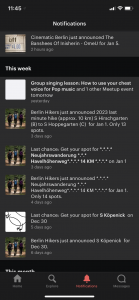 .
. 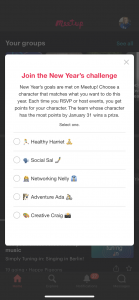
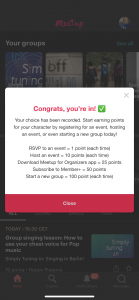
Meetup’s notification centre, plus efforts to engage users.
Applying network effects to your CRM
It should now be clear what Network Effects are and how valuable they can be. Without a doubt, the most difficult phase a product or app has to go through is the initial stage of forming networks, but that doesn’t mean to say once a network has enjoyed a tipping point that you can just relax and let your app grow without intervention. It’s crucial that you keep up your efforts to retain acquired users and constantly prove your value to your existing users because your competition will be doing exactly that!
We recommend focusing all your CRM efforts on personalization and on nudging users to return to the app. Make sure you’re gathering insights into what users like and dislike. These insights should inform your product roadmap, with a focus on upgrading product features in order to align with your users’ needs and then educating your users about these insights accordingly.
Sources and further reading
a16z, The Dynamics of Network Effects
Chen, The Cold Start Problem
Future, All about Network Effects
Harvard Business School Online, What are network effects?
mDevelopers, Technology Adoption Curve – Everything that you need to know
Moore, Crossing the Chasm: Marketing and Selling High-Tech Products to Mainstream Customers
NFX, Viral Effects Are Not Network Effects
TechCrunch, Gorillas, the on-demand grocery delivery startup, raises $290M and ‘surpasses’ $1B valuation
Wikipedia, Diffusion of innovations
Before you go:
- Need support with understanding how to implement network effects with your CRM, reach out to us!
- Structuring research correctly is a crucial aspect of yielding solid insights that can be the basis of a mobile growth strategy. In this article we run your through how to do conduct this user research for mobile apps.
- Leveraging gamification to increase user engagement and retention is one way to encourage network effects with your CRM. Check out our article about gamification in unexpected places.
- Phiture’s Subscription Stack is designed to help growth marketers conceptualize their subscription optimization strategy and understand the essential components of running a mobile subscription business. CRM is vital across the stack, while network effects vital to the effective running of a subscription business.
















